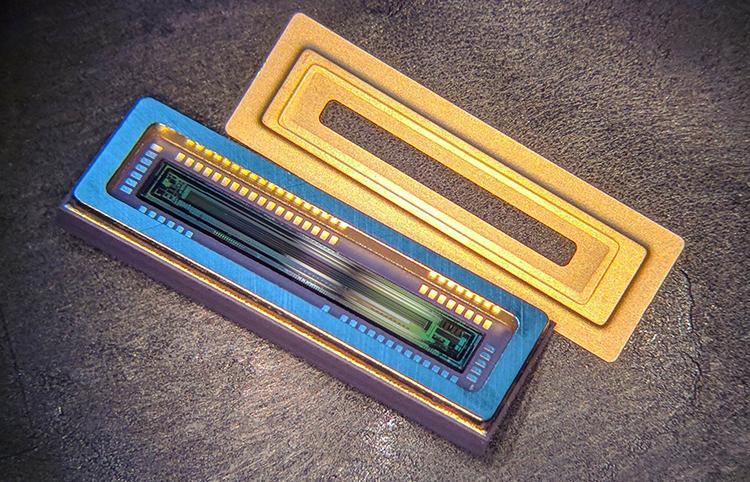
The new hyperspectral graphene photodetector that cover 400–1800 nm.
The new, ultra-sensitive photodetectors combine graphene transistors with an efficient light absorbing layer. This combination enables a wide spectral range to be covered with a single photodetector, from 400 nm to 1800 nm. Complete detection over this wavelength range previously required two sensor types; typically, silicon and InGaAs. InGaAs sensors, however, can be expensive, and the replacement of such material with graphene couples the capabilities of silicon and InGaAs in one graphene-based sensor, allowing for ~30 % cost reduction. The vis/NIR graphene photodetectors are now available to buy.
“Graphene’s unique properties and its compatibility to combine with other materials allowed us to create this cost-effective array for spectrometers”, explained Tapani Ryhänen, CEO of Emberion. “Providing broad spectrum capabilities, without the expense of traditional InGaAs sensors, the vis-SWIR graphene photodetector provides a digital output using Emberion’s inhouse designed read out circuits (ROIC)—without the need to translate analogue data with additional components. With sensitivity and noise levels comparable to InGaAs detectors, our graphene-based sensors are a more affordable option for businesses who were previously faced with costly products.”
Emberion was one of the first spinouts of the Graphene Flagship. It was founded in 2016 to take work done in the Graphene Flagship Optoelectronics work package to the market.
